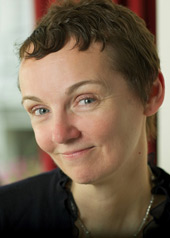The three top trends we saw in diabetes in 2013
By Kelly Close
 As we begin 2014, it seems appropriate to step back for a moment and reflect on the past year in diabetes. I like to use a game called “Rose, Bud, Thorn” to think of one big trend that was positive (the rose), one that has potential (the bud), and one that remains a problem (the thorn). It’s a bit formulaic, admittedly – it’s how my children are often asked to reflect on their day at school – but simplicity can be good when we’re trying to bring some clarity to an entire year’s worth of progress in diabetes research.
As we begin 2014, it seems appropriate to step back for a moment and reflect on the past year in diabetes. I like to use a game called “Rose, Bud, Thorn” to think of one big trend that was positive (the rose), one that has potential (the bud), and one that remains a problem (the thorn). It’s a bit formulaic, admittedly – it’s how my children are often asked to reflect on their day at school – but simplicity can be good when we’re trying to bring some clarity to an entire year’s worth of progress in diabetes research.
Let’s start with my rose. No advance was more exciting this year than the progress made on SGLT-2 inhibitors for type 2 diabetes. That includes Janssen’s Invokana, which received FDA approval this past March, and BMS/AZ’s Farxiga, which was approved in Europe in November 2012 and was just approved in the US on January 8, 2014. This past year’s round of regulatory meetings have offered several opportunities to see new data on the efficacy and potential side effects of SGLT-2s, and the results have been encouraging. Invokana and Farxiga are once-daily oral drugs with, for most patients, manageable side effects, a low risk of hypoglycemia, and slight weight loss that make them appealing for patients. In the near future, we could see exciting growth for the drug class as well as possible fixed-dose combinations. I also remain optimistic about the class’s potential for type 1 patients, much as I do for GLP-1 agonists like Victoza and Bydureon; we already know anecdotally from off-label GLP-1 use that these drugs can work for people with type 1, and anything that expands the breadth of options is a very good thing. Certainly, patients should discuss these issues with their healthcare providers, but we know that they are really working for many people.
Moving onto the bud, I’m not sure I’ve seen anything in my decade of writing about diabetes research that has more potential than the artificial pancreas. This year, we published my test drive on Dr. Ed Damiano’s system, “The Bionic Kids put the Artificial Pancreas Through the Rigors of Summer Camp”, and our artificial pancreas stories, which are already among diaTribe’s most widely read articles! It’s still too early to know exactly how the major logistical challenges will be overcome, but the progress and level of funding support have been encouraging. More than anything else, wearing a device that automated (!) insulin delivery made me appreciate just how complex and elegant the body is. The sophistication that the pancreas needs to make the necessary micro-adjustments in insulin levels is mind-boggling. All of us try so hard to manage our insulin and keep our glucose levels on-target while avoiding dangerous highs and lows. However, it was humbling to realize that even our best management is still the roughest approximation of what the pancreas – be it natural or artificial – can do.
Let’s spare a moment to consider the thorn. Frankly, it’s hard not to be pessimistic about the current state of diabetes care in the big picture, due to giant challenges in reimbursement and access. The new emphasis on efficacy seems like it should be a good thing: it’s hard to argue with cheap, effective therapy and technology. The problem with this pricing pressure is that it leaves little room to encourage innovation. The higher cost of drugs helps fund research and development and brings greater investment into the field. There’s no room left for innovation, and big companies may well start pulling out of R&D altogether if they can no longer justify the costs. Earlier this year, BMS sold off its diabetes business, perhaps related to these very reasons. Also, Lexicon, which we had been counting on for developing advanced compounds in diabetes, announced it will no longer pursue early stage “discovery” work. So then who will? More announcements like these would be profoundly disappointing for the field.
Let me finish my reflections on 2013 with a call to action for 2014. The current state of reimbursement is a problem that we have to solve, and when I say “we,” I really do mean the entire diabetes community. Advocates need to create effective arguments to be heard, and we need to present a unified front. It isn’t necessarily our job to completely fix the complex rules of reimbursement, nor do we have it in our power to do so, but we need to get better at communicating with one another and speaking with one voice. This is the time for ambitious resolutions, after all. Every patient needs to be a patient advocate, because if we’re not going to stand up for ourselves, then who is? If we can all start living by that credo, then 2014 and beyond can be a time of limitless potential for us all.
Very best,
.gif)
Kelly L. Close







